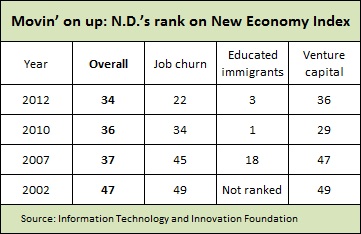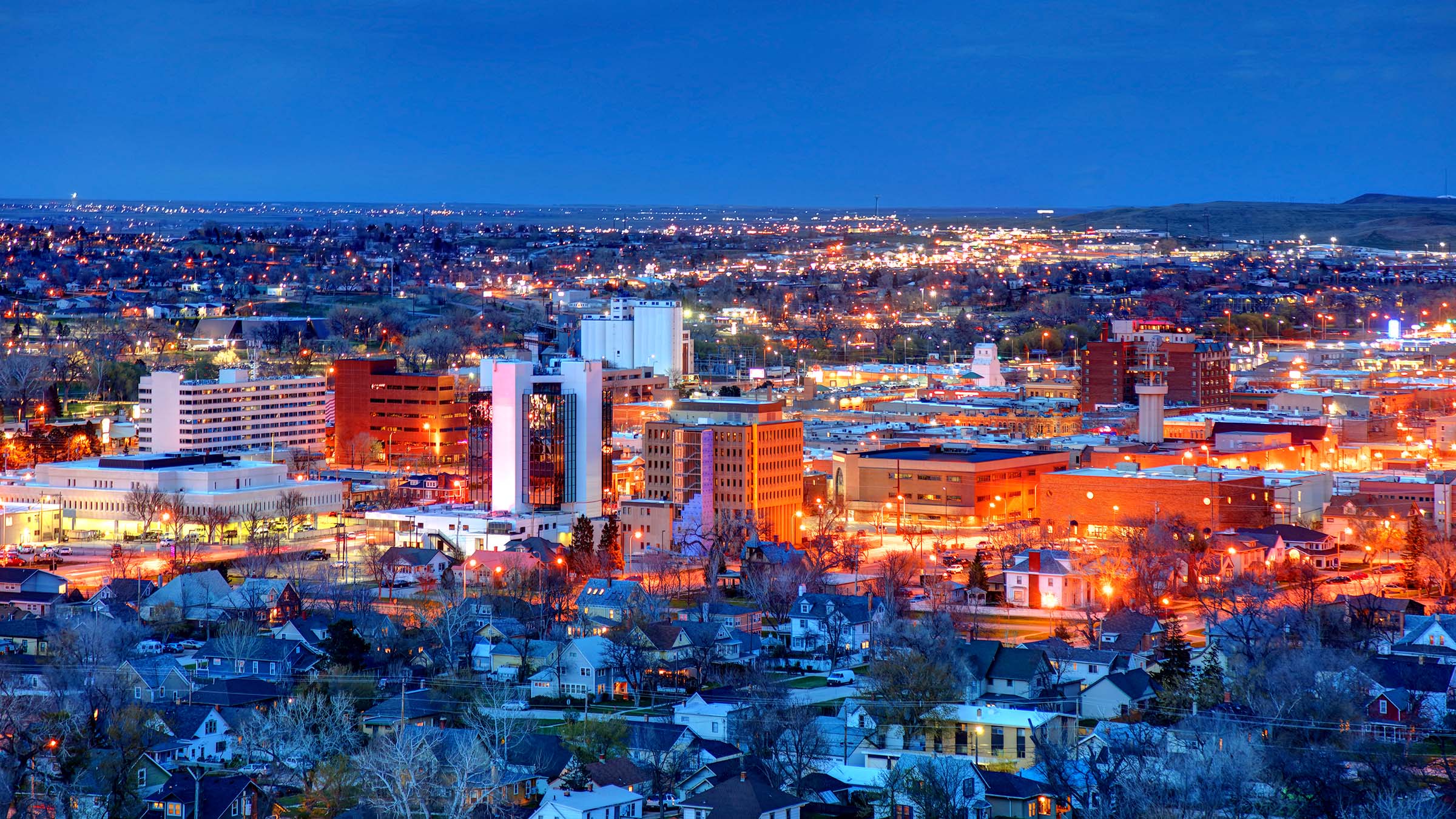The notion of the “new economy” has garnered a lot of attention over the past decade. In the view of some, state economies that are innovative, globally oriented and built around knowledge-based industries are in the best position to grow.
A recent report by the Information Technology and Innovation Foundation (ITIF), a Washington, D.C.-based think tank, ranks U.S. states on a number of new-economy attributes.Among district states, Minnesota ranked 13th on the 2012 State New Economy Index—not unexpected, given the concentration of medical device and other high-tech firms in the state. Minnesota and other district states posted rankings mostly similar to their performance in earlier surveys.
More surprising was the performance of North Dakota, a state associated with farming and, since the mid-2000s, intensive oil production. North Dakota placed 34th in the index, in the middle of the pack. But that score represents considerable progress over the past decade (see table); in 2002, it placed fourth from last among U.S. states. Moreover, North Dakota has raised its score on several new economy indicators, including job creation and destruction, venture capital investment (although the state lost ground in this measure in 2012) and educational level of recent immigrants.
Does this mean that the Peace Garden State is a rising star in the new economy, a potential rival to knowledge leaders such as Minnesota, Colorado and California? Probably not. North Dakota’s economic makeup suggests that the state’s index scores have risen because of rapid economic growth rooted as much in the old economy as the new.
More investment and increased job churn (a characteristic of innovative or fast-growing economies) may partly stem from high-tech manufacturing and software development along the Red River Corridor. But the oil boom in the western part of the state has likely contributed to North Dakota’s improved performance on those indicators. Over the past five years, hundreds of restaurants, retail stores and other traditional businesses have formed to serve the oil patch’s rising population. And oil and gas development has attracted billions of dollars in venture capital from outside the region.
As for North Dakota’s apparent attractiveness to well-educated immigrants, that’s largely due to the fact that, compared with states such as California and Texas, very few poorly educated immigrants settle in the state.






